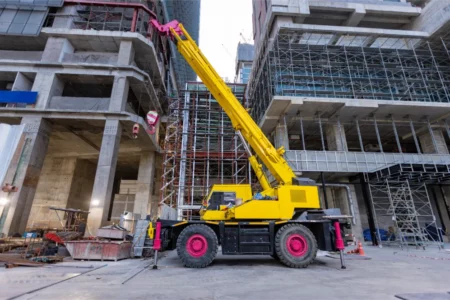Asset Infrastructure Management For Streamlined Operations

At Asset Vision, we’re at the forefront of revolutionising asset infrastructure management. Our cutting-edge practices and technologies are reshaping how organisations handle their critical assets. In this article, we’ll explore how modern asset management strategies can significantly improve operational efficiency, enhance safety, and drive long-term cost savings for your organisation.
Understanding Asset Infrastructure Management
Definition and Scope
Asset infrastructure management encompasses the systematic approach to planning, designing, constructing, operating, and maintaining infrastructure assets throughout their lifecycle. At Asset Vision, we specialise in this comprehensive approach, offering solutions that cover a wide range of activities, from inventory management and condition assessment to risk analysis and financial planning. Our expertise extends across various sectors, including transportation, utilities, and public facilities.
Evolution of Asset Management Practices
We’ve witnessed significant evolution in the field of asset infrastructure management over the years. Traditional methods relied heavily on reactive maintenance and fixed schedules. However, with our advanced technologies and data-driven approaches, we’ve led the shift towards more proactive and predictive strategies. This evolution has been driven by the need for greater efficiency, improved safety, and the growing complexity of infrastructure systems – all areas where our solutions excel.
“The greatest improvement in the productive powers of labour, and the greater part of the skill, dexterity, and judgment with which it is anywhere directed, or applied, seem to have been the effects of the division of labour.” – Adam Smith
This quote from Adam Smith, while originally about labour, perfectly encapsulates our approach to asset infrastructure management. By dividing and specialising our management processes, we’ve dramatically improved the productivity and effectiveness of infrastructure management.
Key Components of Modern Asset Infrastructure Management
Asset Lifecycle Management
At Asset Vision, we understand that one of the fundamental aspects of asset infrastructure management is the comprehensive approach to managing assets throughout their entire lifecycle. Our Core Platform supports this process by:
- Planning and design: Considering long-term needs and sustainability
- Acquisition and construction: Ensuring quality and compliance
- Operation and maintenance: Optimising performance and longevity
- Renewal or disposal: Making informed decisions based on asset condition and organisational needs
By leveraging our lifecycle approach, organisations can make more informed decisions about their assets, balancing short-term needs with long-term sustainability.
Risk-Based Approaches
Our modern asset infrastructure management solutions incorporate risk-based methodologies to prioritise investments and maintenance activities. This approach involves:
- Identifying critical assets and potential failure modes
- Assessing the likelihood and consequences of asset failure
- Prioritising maintenance and renewal activities based on risk levels
- Developing mitigation strategies for high-risk assets
By focusing on risk, we help organisations allocate resources more effectively, ensuring that the most critical assets receive the attention they need.
Data-Driven Decision Making
The cornerstone of our effective asset infrastructure management solutions is the use of data to inform decision-making. Our AutoPilot technology facilitates this by:
- Collecting and analysing data on asset condition, performance, and maintenance history
- Using advanced analytics to identify trends and patterns
- Leveraging predictive models to forecast asset behaviour and maintenance needs
- Enabling decisions based on objective data rather than subjective assessments
Our data-driven approaches enable more accurate planning, reduced downtime, and optimised resource allocation for our clients.
Technologies Transforming Asset Infrastructure Management
IoT and Sensor Networks
At Asset Vision, we harness the power of the Internet of Things (IoT) and advanced sensor technologies to revolutionise how we monitor and manage infrastructure assets. Our solutions enable:
- Real-time asset tracking and condition monitoring
- Automated data collection, reducing the need for manual inspections
- Early detection of potential issues, allowing for proactive maintenance
- Improved safety through continuous monitoring of critical parameters
By leveraging IoT and sensor networks, we provide our clients with unprecedented visibility into their asset performance and condition.
AI and Machine Learning Applications
We’re transforming asset infrastructure management through the application of Artificial Intelligence (AI) and Machine Learning (ML). Our advanced solutions are capable of:
- Analysing large volumes of data to identify patterns and anomalies
- Predicting asset failures before they occur
- Optimising maintenance schedules based on actual asset condition
- Automating routine decision-making processes
These technologies enable more accurate predictions and smarter decision-making, leading to improved asset performance and reduced costs for our clients.
Digital Twin Technology
At Asset Vision, we’re creating new possibilities in asset infrastructure management through digital twin technology. Our solutions offer:
- Virtual representations of physical assets
- Scenario testing and simulation without risking physical assets
- Better understanding of asset behaviour and interactions
- Support for more informed decision-making in asset management
Our digital twin technology offers a powerful tool for optimising asset performance, planning maintenance, and predicting future needs.
Benefits of Implementing Advanced Asset Infrastructure Management
Improved Operational Efficiency
Our advanced asset infrastructure management solutions lead to significant improvements in operational efficiency by:
- Reducing unplanned downtime through predictive maintenance
- Optimising resource allocation based on actual asset needs
- Streamlining workflows and automating routine tasks
- Improving coordination between different departments and stakeholders
These efficiency gains translate into better service delivery and reduced operational costs for our clients.
Enhanced Safety and Compliance
By implementing our robust asset infrastructure management practices, organisations can enhance safety and ensure compliance by:
- Identifying and mitigating potential safety risks proactively
- Ensuring regular maintenance and inspections are conducted
- Maintaining accurate records for regulatory compliance
- Providing real-time monitoring of critical safety parameters
Our focus on safety and compliance not only protects people and assets but also helps our clients avoid costly penalties and legal issues.
Long-Term Cost Savings
While implementing our advanced asset infrastructure management systems may require initial investment, it leads to significant long-term cost savings through:
- Extended asset lifespans due to optimised maintenance
- Reduced emergency repair costs through predictive maintenance
- More efficient use of resources, including labour and materials
- Improved decision-making for capital investments
These cost savings can be substantial, particularly for organisations managing large or complex infrastructure assets.
Best Practices in Asset Infrastructure Management
Developing a Comprehensive Asset Management Strategy
To maximise the benefits of asset infrastructure management, we help organisations develop a comprehensive strategy that:
- Aligns with overall organisational goals and objectives
- Considers the entire lifecycle of assets
- Incorporates risk management principles
- Involves stakeholders from across the organisation
- Sets clear performance metrics and targets
Our well-defined strategies provide a roadmap for implementing effective asset management practices.
Implementing Predictive Maintenance Programs
Predictive maintenance is a key component of our modern asset infrastructure management solutions. Our CoPilot technology supports the implementation of effective predictive maintenance programs by:
- Identifying critical assets that would benefit from predictive maintenance
- Implementing appropriate sensor technologies for data collection
- Developing predictive models based on historical data and asset behaviour
- Integrating predictive maintenance into existing workflows and systems
- Continuously refining and improving predictive models based on outcomes
Our predictive maintenance solutions significantly reduce downtime and maintenance costs while extending asset life for our clients.
Leveraging Data Analytics for Performance Optimisation
To truly optimise asset performance, we help organisations leverage advanced data analytics. Our approach involves:
- Collecting and integrating data from various sources
- Applying advanced analytics techniques to identify trends and patterns
- Using insights to inform decision-making and policy development
- Continuously monitoring and analysing asset performance data
- Adjusting strategies based on analytical insights
By harnessing the power of data analytics, we unlock new levels of performance and efficiency in our clients’ asset management practices.
Three Tips for Effective Asset Infrastructure Management
- Embrace Digital Transformation: Leverage technologies like IoT, AI, and digital twins to gain real-time insights into your assets’ performance and condition.
- Adopt a Lifecycle Approach: Consider the entire lifecycle of your assets, from acquisition to disposal, to make more informed decisions and optimise long-term value.
- Prioritise Data Quality: Ensure that your asset data is accurate, up-to-date, and comprehensive. High-quality data is the foundation of effective asset infrastructure management.
Statistical Fact
According to a report by MarketsandMarkets, the global infrastructure asset management market size is projected to grow from USD 23.0 billion in 2021 to USD 52.8 billion by 2026, at a Compound Annual Growth Rate (CAGR) of 18.1% during the forecast period.
Disclaimer: These figures are provided by external entities and have not been independently verified by our staff. The numbers may not be accurate as of the current date.
Final Thoughts About Asset Infrastructure Management
At Asset Vision, we’re committed to driving the evolution of asset infrastructure management through our cutting-edge technologies and comprehensive solutions. By embracing our modern approaches, organisations can significantly improve their operational efficiency, enhance safety, and achieve substantial cost savings. As infrastructure continues to grow in complexity and importance, effective asset management becomes increasingly crucial for organisational success. We’re here to help you implement these strategies and best practices to ensure your infrastructure assets deliver optimal value throughout their lifecycle.
Ready to revolutionise your asset infrastructure management? Contact us today at 1800 AV DESK or visit our website at www.assetvision.com.au to discuss how we can tailor our solutions to meet your specific needs.
Popular Questions
Has this article sparked your curiosity? If so, feel free to reach out to discuss your asset monitoring and management needs. We may be able to help you answer common questions like these:
- How can asset infrastructure management software improve our operational efficiency?
- What are the key features to look for in a comprehensive asset management solution?
- How does predictive maintenance differ from traditional maintenance approaches, and what benefits does it offer?
- Can you explain how digital twin technology is applied in asset infrastructure management?
If you’re involved in asset infrastructure management, then we invite you to explore how our solutions can benefit your organisation. Contact us at 1800 AV DESK to learn more about our innovative road defect monitoring solutions. Together, we can make data-driven decisions that benefit the public.



